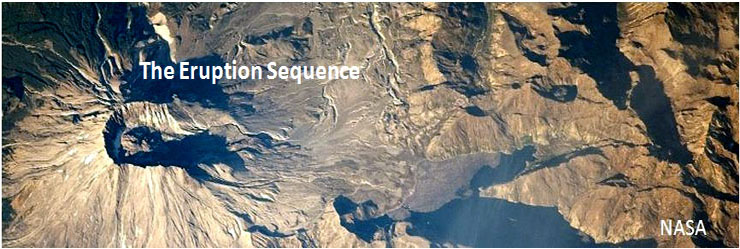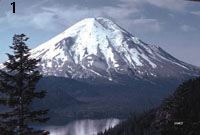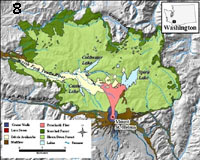The eruption sequence
Before the eruption, Mt St Helens had a majestic, symmetrical cone (fig.1). In a photo on the morning of May 18, 1980, (fig. 2) most of the snow is gone, but a bulge has formed on the north side of the cone.
An eruption was expected momentarily but the expectation was that most of the force of the explosion would be directed upwards

Instead, the eruption began as a landslide comprising 2 blocks. A third would fail later.
The photographs show that the movement of block I provided the pressure release that initiated the lateral blast. (0832:47.0)

Slide block II is then caught mid-slope by the blast and torn apart (0832:53.5)
Slide block I is overtaken in turn and also broken up by the lateral blast (0833:19)

Slide block III collapses after the lateral blast, then the direction of movement of the pyroclastic ejecta becomes vertical.

The vertical plume persists through the remainder of the eruption, but periodically the plume collapses in a pyroclastic flow (fig. 10).
Thus the early products of the eruption are dominated by old rocks from the mountain ediface, whereas by the afternoon, the products are juvenile pyroclastics with abundant pumice fragments.
References [click to see list]











 11
11